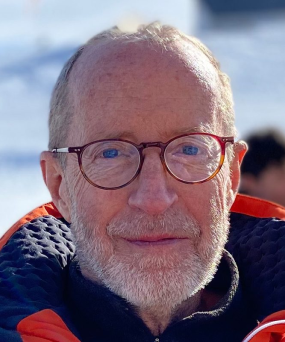- Homepage
- Programme
- Registration
- Practical Guide
- About Neuronus

Dartmouth College, USA

James V. Haxby is a professor in the Department of Psychological and Brain Sciences at Dartmouth College. Director of the Dartmouth Brain Imaging Center and the Center for Cognitive Neuroscience.
After receiving his PhD in clinical psychology at the University of Minnesota in 1981, he held several clinical psychology positions at the Minneapolis VA Medical Center. These included working as a research psychologist at the National Institute of Aging, and later becoming chief of the Section on Functional Brain Imaging at the National Institute of Mental Health. In 2002, Haxby started a professorship in the Department of Psychology at Princeton University, and in 2008 became the Evans Family Distinguished Professor of Psychological and Brain Sciences at Dartmouth College, where he continues his research.
Prof. Haxby’s scientific interests cover a range of topics in cognitive neuroscience. From publishing papers on using functional neuroimaging to investigate the cortical organization underlying visual perception and semantic memory, to proposing an influential model of face perception, his contributions to the field of cogniitve neuroscience are significant. Prof. Haxby also played a critical role in introducing machine learning to functional magnetic resonance imaging (fMRI) data analysis.
The Haxby Lab at Dartmouth began in 2008 and focuses on conducting a number of closely-related research projects on computational methods for building models of neural representation, visual neuroscience, and social cognition. Their recent publications cover the topics of how attention selectively reshapes the geometry of distributed semantic representation, and the animal responses to naturalistic clips in different task contexts.
Talk: "Hyperalignment: modeling shared and individuating information embedded in idiosyncratic fine-scale cortical topographies"
The neural representation of information that is shared across brains is encoded in fine-scale functional topographies that vary from brain to brain. Hyperalignment models this shared information in a common information space. Hyperalignment transformations project idiosyncratic individual topographies into the common model information space. These transformations contain topographic basis functions, affording estimates of how shared information in the common model space is instantiated in the idiosyncratic functional topographies of individual brains. This new model of the functional organization of cortex – as multiplexed, overlapping basis functions – captures the idiosyncratic conformations of both coarse-scale topographies, such as retinotopy and category-selectivity in the visual cortices, and fine-scale topographies. Hyperalignment also makes it possible to investigate how information that is encoded in fine-scale topographies differs across brains. These individual differences in cortical function were not accessible with previous methods.
Haxby, J. V., Hoffman, E. A., & Gobbini, M. I. (2000). The distributed human neural system for face perception. Trends in cognitive sciences, 4(6), 223–233. https://doi.org/10.1016/s1364-6613(00)01482-0
Haxby, J. V., Gobbini, M. I., Furey, M. L., Ishai, A., Schouten, J. L., & Pietrini, P. (2001). Distributed and overlapping representations of faces and objects in ventral temporal cortex. Science (New York, N.Y.), 293(5539), 2425–2430. https://doi.org/10.1126/science.1063736
Norman, K. A., Polyn, S. M., Detre, G. J., & Haxby, J. V. (2006). Beyond mind-reading: multi-voxel pattern analysis of fMRI data. Trends in cognitive sciences, 10(9), 424–430. https://doi.org/10.1016/j.tics.2006.07.005
Ungerleider, L. G., & Haxby, J. V. (1994). 'What' and 'where' in the human brain. Current opinion in neurobiology, 4(2), 157–165. https://doi.org/10.1016/0959-4388(94)90066-3